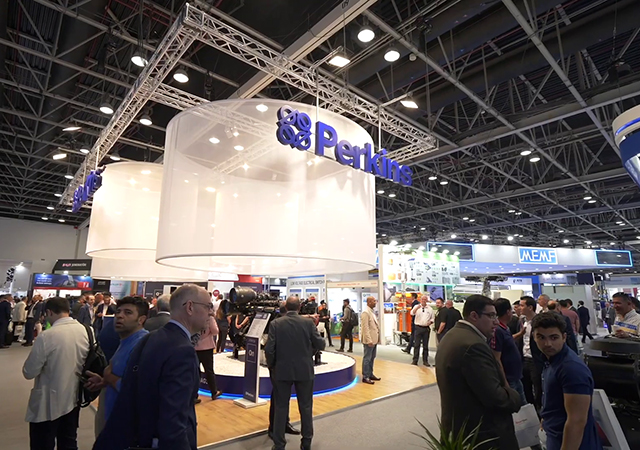

Gulf Industry magazine helps you catch up with the numbers behind economic and industrial developments in the region.
Private wealth in UAE to hit $1 trillion
Private wealth in the UAE is projected to post a compound annual growth rate (CAGR) of 10.7 per cent to reach an estimated $1 trillion in 2019, a study said.
Private wealth in the UAE showed solid growth in 2014 (8.4 per cent), according to the new report by global management consulting firm Boston Consulting Group (BCG), Global Wealth 2015: Winning the Growth Game, released last month (June 16).
In the UAE, the growth of private wealth was driven mainly by equities. After all, between 2013 and 2014, the amount of wealth held in equities rose by 13.8 per cent across the nation, compared with 1.6 per cent for bonds, and 6.9 per cent for cash and deposits.
Based on BCG’s comprehensive study, the UAE is poised for further growth in the next five years, with the wealth breakdown anticipated to be 43 per cent in cash and deposits, 9 per cent in bonds, and 47 per cent in equities.
The Global Wealth 2015 report, BCG’s fifteenth annual study of the global wealth-management industry, addresses the current and future size of the market – notably the projection that the Asia-Pacific region (excluding Japan) will surpass North America as the wealthiest region in the world in 2016 – and explores the keys to profitability on the basis of extensive benchmarking of global players.
“In terms of wealth distribution, private wealth held by ultra-high-net-worth (UHNW) households (those with above $100 million) in the UAE grew by 9 per cent in 2014, on the back of dynamic equity markets and a growing economy,” said Markus Massi, a partner & managing director at BCG Middle East.
In the UAE, private wealth held by the lower HNW segment (those with between $1 million and $20 million) grew at a slightly lower rate (9.1 per cent) in 2014. It is forecasted to grow by 12.9 per cent over the next five years.
“The total number of millionaire households (those with more than $1 million in private wealth) in the UAE increased by 5.5 per cent in 2014,” remarked Massi. “Looking ahead, it is set to grow another 5.3 per cent by 2019.”
UAE, Saudi to grow despite cheap oil
THE UAE and Saudi Arabia continue to witness growth despite lower oil prices, a report said, noting that the UAE even recorded high levels of job creation during May, while Saudi Arabia’s output and new orders expanded.
“Interestingly in the UAE, once again new orders and new export orders components reflected strong growth, while job creation hit a three-month high,” said Dr Paul Wetterwald, chief economist at Crédit Agricole Private Banking, commenting on the financial institution’s research report “Macro Comment – Mena Update”.
“This is reflected in the UAE’s non-oil private sector PMI which did not decline significantly in May (56.4) compared to 56.8 in April. On the other hand, input costs rose contrasting with a slight decline of the output prices charged by companies.
“In this background, it is too early to infer from this latest change that a downward trend in the CPI indices has started. We can see that the UAE’s CPI was +4.2 per cent year-on-year in April, which is the same as in Dubai where inflation can be an issue. Nevertheless, we can say that the UAE is yet to fully feel the pinch of the lower oil price across its relatively diversified economy in comparison to GCC peers,” Dr Wetterwald added.
“Similarly in Saudi Arabia, output and new orders expanded but the rate of growth and pace of job creation eased somewhat during the month. It was interesting to note that the Kingdom’s headline PMI last month (57.0) was at its lowest level since May 2014. While the most recent data in the PMI series still depicts a growing non-oil private sector economy, our estimate of growth in Saudi Arabia is more conservative,” he said.
“For example, based inter alia on the latest Saudi Arabia Monetary Authority statistics, we get a Q1 2015 nominal GDP growth estimate which is only slightly positive.”
Rapid digitisation faces cyber-threat
MENA’S digital market value is expected to reach $35 billion in 2015, and overall digitisation initiatives could add $820 billion to regional GDP, creating 4.4 million jobs by 2020.
However, this rapid digitisation and the resources of the region make Mena an attractive target for a wide array of cyber-threats, according to a study by Strategy&, a professional services firm.
The Strategy& study looks into national cyber-security efforts by the region’s governments, and outlines strategic reforms to improve cyber-security through a three-pronged framework, and offers six practical applications specific to the Middle East. Acting immediately on these imperatives governments will ensure that their nations will reap the full rewards of digitisation.
Dr Walid Tohme, a partner at Strategy&, formerly Booz & Company said: “There is a growing gap between the capabilities of national stakeholders, both from the public and private sectors, and the capabilities of organisations and individuals sponsoring and executing cyber attacks. To close this gap, we believe that the governments of the Middle East need to take a strategic approach to rethink and revamp their national cyber-security efforts.”
The ‘CCC’ framework underpins an effective cyber-security programme. The ‘CCC’ framework outlined by Strategy& bases its approach to an effective national cyber-security programme on being comprehensive in nature, intentionally collaborative, and capability-driven.
Foreign investment in Bahrain hits $1bn
INWARD foreign direct investment (FDI) in Bahrain was nearly $1 billion at the end of last year, a report has found.
The United Nations Conference of Trade and Development’s (UNCTAD) World Investment Report 2015, launched regionally at the Ramee Grand Hotel in Seef Bahrain, shows that FDI remained at a similar level in 2014 as in 2013, (2014: $957 million; 2013: $989 million), said a report in the Gulf Daily News (GDN), our sister publication.
As a percentage of GDP (55.4 per cent), Bahrain’s inward FDI stocks, which reached $18.8 billion last year, remained the highest in the GCC and well above the global average, emphasising Bahrain’s position as one of the region’s most open economies, Economic Development Board (EDB) chief executive Khalid Al Rumaihi said at the launch.
The report says that global foreign direct investment fell by 16 per cent to $1.23 trillion last year, due to the fragility of the global economy, policy uncertainty for investors and geopolitical risks, as well as new investments being offset by some large divestments. FDI into West Asia, which covers a number of countries in the Mena region including the GCC members, Turkey, Jordan and Iraq, also fell by four per cent to $43 billion. Turkey remained the largest FDI recipient in the West Asia region, while investment into the GCC remained “sluggish” despite continuing robust economic growth.









